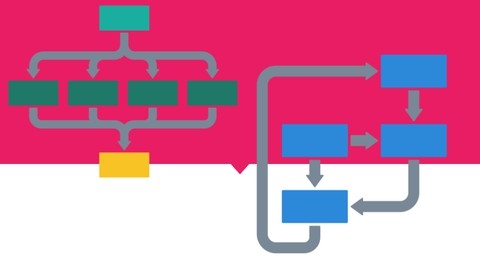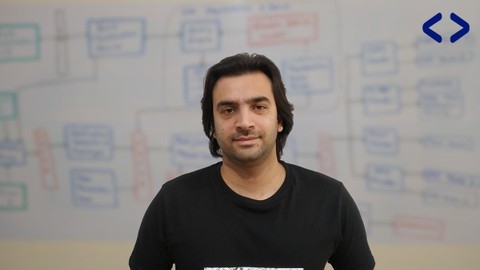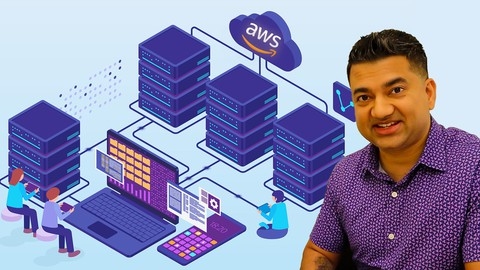System design is a crucial aspect of software engineering, involving the creation of robust, scalable, and reliable systems that can handle vast amounts of data and users.
Mastering system design is essential for aspiring software engineers, especially those seeking roles in large-scale, distributed systems.
Learning system design empowers you to build complex applications that can withstand high traffic and unexpected loads, making you a valuable asset in the tech industry.
Finding the right system design course on Udemy can be a challenge, given the vast number of options available.
You’re looking for a program that’s comprehensive, engaging, and taught by experienced professionals who can guide you through the complexities of designing scalable and reliable systems.
We’ve reviewed countless system design courses on Udemy and based on our analysis, Mastering the System Design Interview stands out as the best overall course.
This program excels by providing practical, real-world case studies and mock interviews, simulating the pressures of actual system design interviews.
It equips you with the knowledge and skills needed to design systems like a URL shortener, restaurant reservation system, or even a search engine.
While this course is our top pick, several other excellent options cater to various learning styles and preferences.
Keep reading to discover more recommendations for beginners, intermediate learners, and experts, as well as courses focusing on specific system design aspects like databases, microservices, and security.
Quick Picks
| Course | Skills |
|---|---|
| Mastering the System Design Interview | • Design scalable systems • Apply design patterns • Analyze system complexity |
| Pragmatic System Design | • Design scalable systems • Estimate system capacity • Apply architectural patterns |
| System Design Interview Guide for Software Architecture | • Design scalable systems • Analyze system requirements • Optimize database selection |
| Rocking System Design | • Design systems • Microservices expertise • Scaling knowledge |
| Preparing for the System Design Interviews V2 - End to End | • Design scalable systems • Solve system design problems • Build efficient architectures |
| Software Architecture & System Design Practical Case Studies | • Design scalable systems • Solve design problems • Microservices architecture |
| Low Level System Design [An interview perspective] | • Design real-world systems • Object-oriented design • System testing |
Mastering the System Design Interview
Throughout the course, you’ll gain hands-on experience applying design patterns for massively scalable, performant, and reliably distributed systems.
The course dives deep into horizontal scaling, teaching you how it compares to single-server and vertical scaling designs.
You’ll learn failover strategies to ensure your system seamlessly handles server failures.
Sharding and denormalization techniques for NoSQL databases like MongoDB and Cassandra are covered in detail, along with the use of data lakes for storing and analyzing raw data.
To make informed design decisions, you’ll gain a nuanced understanding of ACID compliance and the CAP theorem.
The course explores how to strategically use caching, including technologies like Akamai, CloudFront and CloudFlare CDNs to serve content as close to users as possible.
You’ll learn to design for resiliency, so even major disasters like entire data center outages won’t bring your system down.
Distributed storage solutions like Amazon S3, Google Cloud Storage, Microsoft Azure, and HDFS are covered, giving you a solid foundation in the tools available.
The course also provides a refresher on key computer science concepts, reviewing essential data structures and algorithms like linked lists, binary trees, hash tables, graphs, and search and sort algorithms.
You’ll learn to analyze their computational complexity to make smart choices in your system designs.
Message queues, Apache Spark, and cloud computing are explored in the context of processing massive datasets.
Real-world mock interviews challenge you to design systems like a URL shortening service, restaurant reservation system, web crawler, top-sellers feature, video sharing platform, and even a search engine.
You’ll practice the key steps of working backwards from requirements, defining APIs, and architecting scalable solutions under realistic interview conditions.
Pragmatic System Design
The course covers a wide range of topics essential for designing scalable and reliable systems.
The course starts with an introduction to system design, teaching you the fundamental building blocks and how to structure your diagrams for easy understanding.
You’ll learn how to make estimates for latency, throughput, and capacity of your system components.
Next, the course dives into networks, discussing load balancing and CDNs.
Caching is covered in depth, including strategies like cache aside, read-through, write-through, and write-behind.
You’ll learn about eviction policies like LRU and LFU, and how to use Redis for distributed caching.
Queues are a crucial component of scalable systems, and the course explains their role in enhancing scalability and reliability.
You’ll discover the differences between message queues and pub/sub, and how technologies like RabbitMQ and Kafka facilitate asynchronous communication between components.
The course also covers important protocols like TCP, UDP, HTTP, REST, WebSockets, long polling, gRPC, and GraphQL.
You’ll learn when to use each protocol based on your specific use case.
Concurrency is another key topic, with lessons on processes, threads, and thread pools.
The course clarifies the difference between concurrency and parallelism.
Database design is essential for performance and scalability.
The course teaches you about indexes, sharding, consistent hashing, partitioning, the CAP theorem, and ACID transactions.
Architectural patterns like web sessions, serialization, and CQRS are explained, providing you with tools to solve common challenges in system design.
The course includes several real-world case studies, walking you through the design of complex systems step by step.
You’ll learn how to design a taxi-hailing app like Uber, a chat application like WhatsApp, a web crawler like Google’s, an auction platform like eBay, a URL shortener like TinyURL, a coupon system like Groupon, a news feed like Twitter, a ticketing system, and a cloud storage solution like Google Drive or Dropbox.
By the end of the course, you’ll have a solid understanding of system design principles and practical experience in designing scalable, reliable, and performant systems.
System Design Interview Guide for Software Architecture
The course kicks off with an introduction that sets the stage, explaining how it will cover the most common system design interview questions and their solutions.
But more importantly, it equips you with a clear understanding of key system design concepts and a framework to structure your interview responses effectively.
One critical aspect of system design is choosing the right database for the job.
The course dives into common use-cases you’ll encounter and guides you on which database to use in various scenarios.
It even explores how combining multiple databases can help solve complex problems.
The real meat of the course lies in the practical, real-world case studies.
You’ll learn how to design scalable systems like URL shorteners that can handle billions of requests without collisions, hotel booking platforms like Airbnb or Booking.com that manage millions of hotels and users, and e-commerce giants like Amazon with their powerful recommendation engines.
But the course doesn’t stop at web applications.
It also covers designing messaging apps like WhatsApp that scale to billions of users with minimal latency, even for group chats.
You’ll discover how to build notification systems that reliably send billions of notifications while prioritizing important ones and avoiding user bombardment.
Interested in the system design behind ride-sharing apps?
The course has you covered with a deep dive into designing a cab booking system like Uber or Lyft, tackling challenges like efficiently matching riders to drivers and storing location coordinates.
Social media is another hot topic, and you’ll learn how to architect Twitter and Facebook-scale systems that minimize latency, handle massive tweet volumes, moderate content, and personalize user feeds.
The course even touches on designing YouTube and Netflix-style video streaming platforms, exploring how to store exabytes of content and serve it with low latency, even on low-end devices and slower internet connections.
For those interested in the world of video conferencing, there’s a whole lecture on designing Zoom-like systems.
You’ll gain insights into the protocols involved, establishing peer-to-peer connections, transmitting huge amounts of video data, and ensuring a smooth, real-time experience.
The course rounds out its case studies with a fascinating look at designing navigation apps like Google Maps or Apple Maps.
You’ll learn how to optimally calculate routes, store vast amounts of map data, handle ever-changing geographies, and leverage the goldmine of location data.
But the “System Design Interview Guide for Software Architecture” isn’t just about what to do - it also covers what not to do.
A dedicated section highlights the biggest mistakes candidates make in system design interviews and how to avoid them.
Finally, the course includes a review section with practice exercises to reinforce your learning.
An MCQ-based practice test assesses your grasp of the covered topics, with some questions having multiple correct answers to keep you on your toes.
Rocking System Design
You’ll start with the fundamentals, learning about monoliths, microservices, and their differences.
The course then dives into deploying microservices on AWS, exploring load balancing options like ALB and NLB.
APIs and API Gateways are covered in depth, as they are crucial components in most system designs.
Scaling is a key focus, with lectures on vertical and horizontal scaling, as well as scaling VMs, serverless architectures, and containers.
The course even includes real-world scaling interview tips to help you ace your next system design interview.
You’ll learn about synchronous and event-driven architectures, and the differences between queues, pub/sub, streaming, and messaging.
The course covers databases extensively, comparing SQL vs NoSQL, and Aurora vs DynamoDB.
Modern communication protocols like websockets are explained in the context of server-to-client communication, such as in chatbot applications.
Caching is demystified, with lectures on Redis, Memcached, and various caching strategies.
High availability and fault tolerance are critical in production systems, and this course ensures you understand the differences.
You’ll learn about distributed computing, hashing, consistent hashing, and database sharding.
Disaster recovery is an important aspect of system design, and you’ll learn about RPO, RTO, and different disaster recovery options.
The famous CAP theorem is also covered.
The course then moves on to reusable parts of system design, such as the AWS Well-Architected Framework and the important three-tier architecture.
You’ll see how to implement three-tier architectures on serverless platforms and Kubernetes.
Several common design patterns are explained, including content-based messaging systems, image storage and retrieval, high-priority queuing systems, and data analytics and big data design patterns.
Performance and cost optimization are also covered.
Security is a major concern in any system, and this course has you covered with lectures on authentication, authorization, encryption at rest, client/server-side encryption, and encryption in transit with SSL/TLS/MTLS.
You’ll understand the differences between IDS, IPS, security groups, and NACLs.
IAM users, roles, and groups are also explained.
The course then applies all these concepts to design modern applications like YouTube, Netflix, Twitter, WhatsApp, Tinder, Uber, Fandango, IoT systems, Shopify, URL shorteners, parking garages, and Amazon.com.
Each application design lecture dives deep into the specific requirements, database design, architecture, security considerations, and more.
Preparing for the System Design Interviews V2 - End to End
The course starts by explaining what system design interviews are and why they are crucial for landing high-paying roles at leading software firms.
You’ll learn a structured 5-step approach to tackle most system design problems, focusing on understanding the problem, creating high-level and low-level designs, coding key components, and identifying potential flaws.
Throughout the course, you’ll dive into essential concepts like the CAP Theorem, handling data with various database technologies like NoSQL and relational databases, building the middleware layer using microservices, and constructing the front-end UI.
The syllabus also covers critical topics such as load balancing strategies, caching techniques, and content delivery networks (CDNs) to help you design scalable systems.
One of the standout features of this course is the hands-on case studies and demos.
You’ll work on designing a scalable e-commerce store like Amazon, complete with low-level design, database design, and API development.
Another project involves building a feed application using cache servers, similar to Twitter’s timeline or Facebook’s news feed.
The course also includes in-depth lessons on designing and coding an efficient LRU cache, a popular interview question.
You’ll learn two approaches and have access to downloadable Java code that can be easily adapted to other languages like Python or C#.
Additionally, you’ll explore advanced topics such as designing a distributed cache, a ticketing server for a distributed system, and a recommendation engine using techniques like collaborative filtering and market basket analysis with the Apriori algorithm.
By the end of the course, you’ll have the skills to design an autocomplete feature like Google Suggest, working with data structures like tries and leveraging big data technologies such as HDFS and MapReduce.
Software Architecture & System Design Practical Case Studies
This course dives deep into solving large-scale design problems in software architecture, equipping you with the key concepts and step-by-step process needed to excel in this domain.
Throughout the course, you’ll work on several real-world case studies that cover a wide range of scenarios.
You’ll learn how to design a highly scalable image-sharing social media platform, where you’ll gather system requirements, define the API using sequence diagrams, and create a high-level software architecture diagram following microservices and event-driven architectures.
The course also addresses crucial aspects like scalability, availability, and performance optimization.
Next, you’ll explore the design of a Video-On-Demand (VOD) streaming service capable of delivering content to millions of users globally.
You’ll make important system design decisions and define the software architecture using various styles and patterns.
The course also covers the design of a highly scalable, real-time instant messaging service, where you’ll capture requirements, design the system using microservices architecture, and optimize for scalability and performance.
Another exciting case study is the design of a typeahead/autocomplete service for a search engine.
You’ll learn about big data processing concepts and create a fully functional software architecture diagram.
The course also includes the design of a scalable ride-sharing service, where you’ll dive deep into the intricacies of architecting such a complex system.
You’ll also learn how to ensure scalability, high availability, and fault tolerance in your system designs.
By the end of this course, you’ll have gained practical experience in designing large-scale systems and be well-equipped to tackle system design interviews.
The course also provides additional resources and final tips to help you further enhance your skills.
Low Level System Design [An interview perspective]
This comprehensive course takes you on a journey through designing real-world systems from the ground up.
You’ll start by learning how to design a basic ride sharing application like Uber or Ola.
The course walks you through defining the problem, designing classes for booking rides and representing users, and testing your code to ensure it meets requirements.
You’ll even tackle advanced scenarios like handling multiple user bookings simultaneously.
Next, you’ll dive into designing a meeting scheduler capable of booking multiple meetings at once.
You’ll learn how to represent rooms, meetings, and the core scheduling logic.
The course challenges you to extend the application to handle multi-day meeting scheduling.
From there, you’ll move on to designing a task planner like Jira.
You’ll model sprints, tasks, and users in depth.
Testing is emphasized throughout to validate your design against requirements.
Fancy building games?
The course has you covered with lessons on designing a bowling game system from scratch.
You’ll represent game sessions, the game itself, and players.
Snakes and Ladders is another fun project you’ll tackle to cement your game design skills.
Practical applications like a Splitwise-style money sharing app are also on the agenda.
You’ll design classes to represent users, expenses, and the core money splitting logic.
The course even covers optimizing your solution and simplifying expenses.
Social features are all the rage these days, so you’ll learn to design a Facebook-style comment system.
Posts, comments, and users will be modeled to mimic the real thing.
The course rounds out with a variety of other system design challenges.
You’ll take on designing a sales management system, a text editor like Notepad, an employee management application, a book catalog for a library, and a priority-based job scheduler.







![Low Level System Design [An interview perspective]](/img/best-system-design-courses-udemy/3385384_LowLevelSystemDesignAninterviewperspective.jpg)